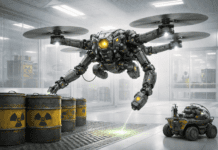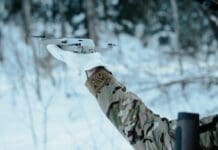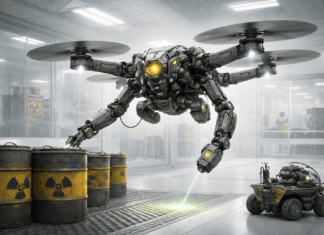This post is also available in:
 עברית (Hebrew)
עברית (Hebrew)
Autonomous drones will supply US Customs and Border Protection agents with a portable detection system. The CBP will test autonomous drones that can provide situational awareness for agents working between ports of entry.
The agency has been working with colleagues at Homeland Security’s Science and Technology Directorate to build and test prototypes of Planck Aerosystems’ autonomous small unmanned aircraft systems, or sUAV.
According to nextgov.com, Planck will be granted $200,000 to test its prototype in operational environments over the next three to six months.
“Planck’s system capability enables a sUAV to launch from and land on the bed of a moving vehicle, in addition to providing fully autonomous navigation coupled with a securing mechanism, advanced computer vision capabilities and customized communications interfaces,” according to the announcement from S&T.
“Through a combination of integrated technologies, including full-motion video, automatic target detection and geolocation, Planck seeks to provide CBP agents with a portable, ruggedized detection system that provides real-time situational awareness in the field.”
The Silicon Valley Innovation Program is fostering development of technologies that can be applied directly to agency missions.
“S&T is looking for technologies to enhance the efficacy of CBP patrols while simultaneously increasing the safety of patrolling agents,” said Melissa Oh, managing director of the Silicon Valley Innovation Program. “We look forward to the ways Planck will further refine its technology in support of this homeland security mission.”
The company offers the ability to operate autonomously from a moving vehicle or vessel on land or at sea. Their technologies are designed for surveillance, reconnaissance, real-time situational awareness, and force protection. Drone autonomy is based on computer vision and artificial intelligence.


























